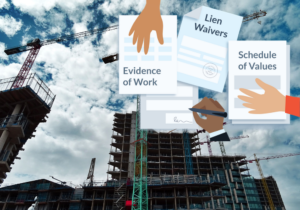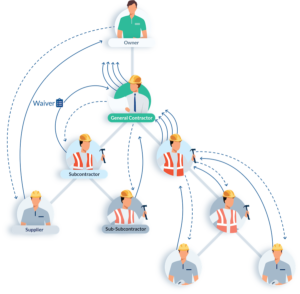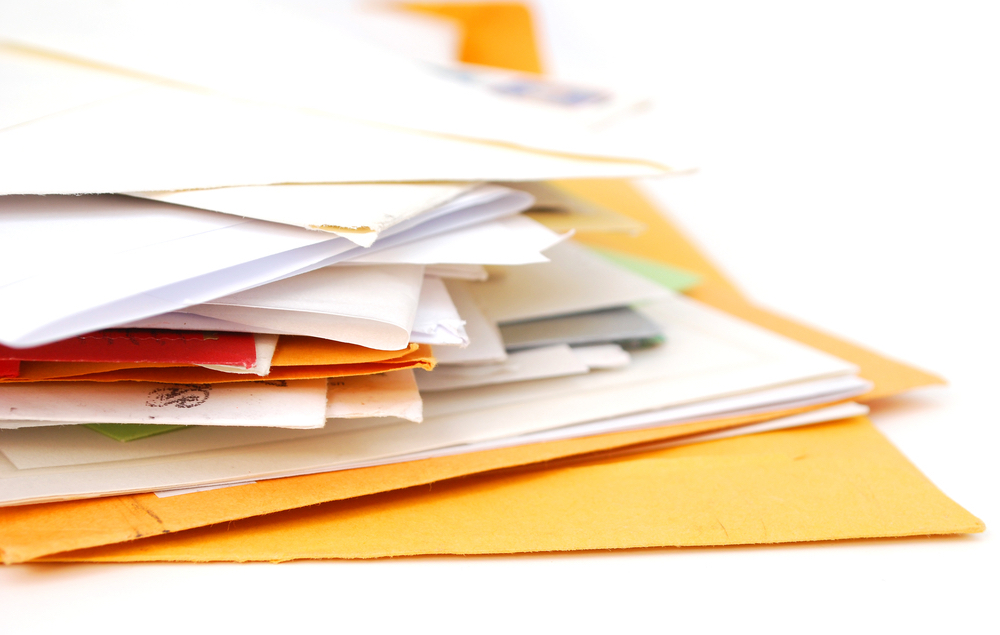
The construction industry takes a particularly unique approach to getting paid. There are multiple parties involved, a majority of them are working on credit, and the money has to pass through numerous hands. It’s no wonder why payment is so slow on construction projects. Anything contractors can do to streamline this process can help everyone on the project. One great way to facilitate this process is to use invoices, payment applications, and lien waivers in unison.
Payment on construction projects is a slow process

Let’s take a look at a simplified version of how a typical construction payment chain works:
- It starts with a sub-subcontractor or material supplier. They will submit their invoices to the subcontractor who hired them.
- The subcontractor will then, based on the invoices received, prepare their payment application and submit it to the general contractor for approval.
- The general contractor (GC) will then gather all of those subcontractor pay apps, and submit their own payment application to the owner for approval.
- The owner will either redline the pay application (and send it back with adjustments) or approve it, and release the payment to the GC.
- The GC will send payment downstream to their subcontractors and suppliers.
Seems like a long, but relatively straightforward process. However, problems can arise when the property owner or construction lender refuses to release project funds until they receive lien waivers – which is (a) their right to do so, and (b) just plain smart. At this point, requests for lien waivers have to flow all the way down the chain and then sent back upstream.
Payment applications, invoices, and lien waivers should all be used together
Payment applications
A pay application is just what it sounds like: An application for payment. Unlike an invoice, a pay app is a contractor submitting proof of all labor and materials provided within that billing period. Whether you’re using a pay application from the American Institute of Architects (AIA), ConsensusDocs, or your own, it’s best to think about a pay application as a bundle of documents, rather than a single piece of paper.
The owner or lender needs to review, confirm, and approve every line item before they will consider releasing payment. It stands to reason that the more information and documentation you provide, the more likely the GC or owner will approve your application. Supporting information can include a number of different things, such as change orders, daily reports, invoices, and photo documentation. Speaking of invoices…
Vendor invoices
Invoices are typically much shorter and simpler than pay apps. When a construction contract calls for the use of payment applications, only first-tier subcontractors (those hired by the GC directly) are required to submit them. Sub-subcontractors and suppliers, equipment lessors, ,and other lower-tiered project participants can usually submit simple invoices. When it comes time for subs or general contractors to submit their pay applications, its best practice to include copies of all the invoices you’ve gathered from your subs & suppliers on the project. That way, when line-item tasks are reviewed, the owner can easily cross-reference the values with all of the supporting invoices.
Lien waivers
One overlooked document that you should include in your pay application bundle is a lien waiver. But keep in mind, there is an inherent catch-22 when it comes to lien waivers. On one hand, parties making a payment don’t want to release the money until they receive a lien waiver. On the other hand, parties requesting payment don’t want to waive their lien rights until they get paid. This standoff is completely unnecessary. Cue the conditional lien waiver!
Always use conditional lien waivers
This document is the perfect balance of both parties’ interests. As a subcontractor or other lower-tiered party, don’t wait for the GC or owner to request a lien waiver. Be proactive and supply one from the get-go. We have so many subcontractors dealing with a contractor or owner refusing to pay until they execute an unconditional waiver. Again, completely unnecessary.
The problem is that there are plenty of people in the industry that don’t fully understand how conditional lien waivers work. They think that an unconditional waiver is their best and only option to protect against a mechanics lien. Or, they’re trying to pull a fast one on you.
Don’t even give them the option. Send one up front. They’re just as valid as their unconditional counterparts, except they don’t become enforceable until payment is made. Unless the owner doesn’t plan on paying in full, there’s no reason to refuse a conditional lien waiver.
Read more about the difference between conditional and unconditional waivers, and how they work together to get contractors paid.
How using pay apps, invoices, and waivers together helps your business
Promotes faster payment
Sending pay apps up the payment chain without copies of invoices or lien waivers risks unnecessary delay. It only means that you’ll have to wait for the GC or owner to review the payment request, approve it, request a waiver, receive a waiver, then release the payment. Waiting for them to request more information or waivers wastes your time, their time, and the time of your subs and suppliers. This is just adding more delay to an already painstakingly slow process.
Here’s a good rule of thumb for any aspect of the construction industry: It doesn’t matter what you’ve done. It only matters what you can prove. This is why including copies of of all the invoices you’ve collected is crucial. If included, the owner can easily cross-reference them with the pay app and schedule of values to approve your payment request as quickly as possible.
Builds stronger relationships
Anything that makes the construction payment chain more efficient is better for everyone. By providing all of your invoices and lien waivers up front, it shows you understand the process. The GC or owner sees that you are willing to work together to make payments as simple as possible. Not only that, but it also displays a sense of professionalism and organization. This collaborative mentality can go a long way to builder better business relationships. And at the end of the day, happy customers equal faster payments and more contracts.
Establishes a document trail
It’s important for every business to keep records of the work they’ve done. In construction, which is heavily dependent on contract law, it’s especially critical to keep records your work and the documents that prove it. Every construction professional should have a well thought-out document retention strategy. Being able to demonstrate the work you’ve done, and when you did it, can help protect you from future claims. It can also protect your right to file a mechanics lien, should the need arise.


